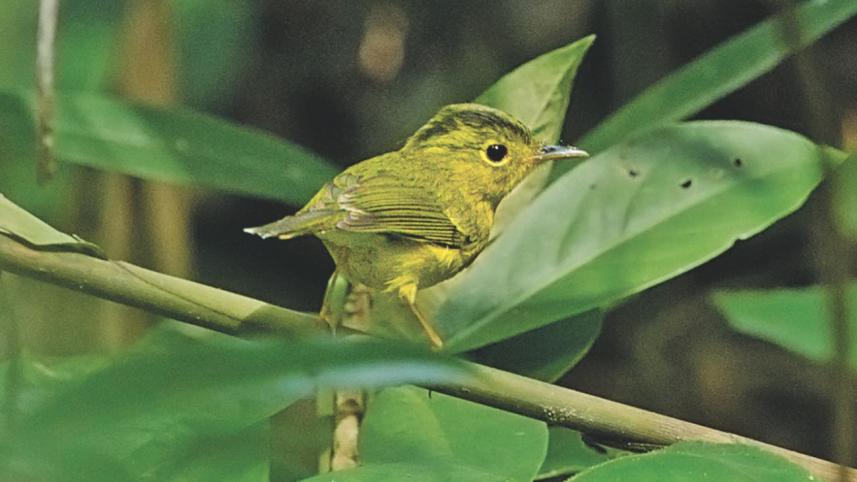Warblers

One afternoon, I went to see the eminent bird expert Enam Ul Haque. He was going to help me with birds I had photographed but could not identify. We went quickly over the larger birds and then we came to a series of small brown birds I had photographed in leaves and foliage. These were a group of birds known as warblers.
“The more one knows about birds, the slower one is to identify them,” Enam remarked, carefully looking at the pattern on the wing of a bird. He meant that the novice birder, not aware of subtle differences between species, will quickly but incorrectly identify a bird. The more one learns about birds, the harder it becomes to identify them.
This maxim is particularly apt for warblers.
Warblers are a large group of birds, over 400, with some common traits. They are small, insectivorous birds with thin bills that spend their time in dense vegetation. Most are coloured in shades of brown, yellow, green or olive. They appear and disappear quickly as they flutter among leaves.
Warblers represent a challenge for the birder. Just watching them requires supreme patience. One can see a little part here, a little part there, but it is hard to see the entire bird. They are so fidgety that even if they appear as a whole, it will be only for an instant before they move on, thus making photographing them a frustrating experience.
Once you photograph the warbler, you would want to identify it. You look at its face, the patterns on its head, its beak shape, its wing, its tail, the colour of its legs. Then you pore over a birder's field guide – with precise and detailed descriptions - and try to find the closest match.
For example, there are two similar looking warblers called green-crowned warbler and Whistler's warbler. Both have white rings around the eye but the green-crowned warbler's eye-ring is “cut” at the back. This differentiator helps identification. Other warblers often do not have such clear differentiators and require several photographs from different angles for clear identification.
For many years, ornithologists apparently used “warbler” as a basket of convenience for throwing in small birds that did not fit into other families. Only during the 1950's, and subsequently using DNA testing, did they start sorting them out properly. The process continues today, so it is not wonder that warblers confuse us.
There is also the business of “Old World Warblers” versus “New World Warblers.” They are two completely different families in the old world and the new world, following a process known as parallel evolution.
Since I have spent –and wasted - much time trying to photograph warblers, these days I don't try to photograph every warbler I spot . Instead, I look at the vegetation it is hiding in. Is it thin enough that I have a chance of getting a clear photograph? For example, if I spot a warbler in a sajna tree with its small leaves and thin foliage, I try to photograph it. However if the warbler is in bamboo or dense foliage, I usually ignore it.
facebook.com/tangents.ikabir



 For all latest news, follow The Daily Star's Google News channel.
For all latest news, follow The Daily Star's Google News channel.
Comments